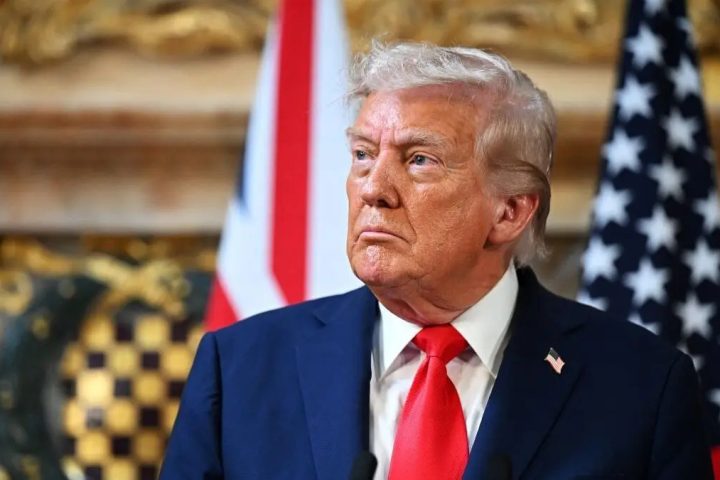President Donald Trump’s second term has unleashed unprecedented tariff policies that are fundamentally reshaping global trade relationships and intensifying geo-economic tensions worldwide. From the historic “Liberation Day” tariffs declared on April 2, 2025, to ongoing bilateral trade negotiations, the Trump administration’s aggressive trade strategy represents the most significant disruption to international commerce in modern history. Understanding these policies and their far-reaching implications is crucial for businesses, policymakers, and investors navigating an increasingly fragmented global economy.
The Architecture of Trump’s Tariff Revolution
The Emergency Powers Framework
President Trump is invoking his authority under the International Emergency Economic Powers Act of 1977 (IEEPA) to address the national emergency posed by the large and persistent trade deficit that is driven by the absence of reciprocity in our trade relationships and other harmful policies like currency manipulation and exorbitant value-added taxes (VAT) perpetuated by other countries.
Using his IEEPA authority, President Trump will impose a 10% tariff on all countries. This took effect April 5, 2025 at 12:01 a.m. EDT. President Trump imposed an individualized reciprocal higher tariff on the countries with which the United States has the largest trade deficits, which took effect April 9, 2025 at 12:01 a.m. EDT.
The Scale and Scope of Current Tariffs
The magnitude of Trump’s tariff policies has reached historic proportions. The tariffs amount to an average tax increase of nearly $1,300 per US household in 2025. By calculations from economic analysts, this takes the average effective tariff rate from around 10% to just over 23%, with some estimates showing the remaining tariffs brought the average applied US tariff rate to 27%—the highest level in over a century.
The comprehensive nature of these tariffs affects virtually all trading partners. On April 2, 2025, Trump declared a national emergency to address what he described as a “large and persistent US trade deficit” and invoked the IEEPA to impose a 10% minimum “reciprocal tariff” on nearly all other countries, effective April 5, 2025. He also announced higher “reciprocal tariffs” for 57 countries and territories beginning April 9.
Country-Specific Tariff Impacts
China: The Primary Target
China faces the most severe tariff regime under Trump’s policies. US tariffs on Chinese goods rose to 145% while Chinese tariffs on US goods rose to 125% following retaliatory measures. The administration has imposed a 20 percent tariff on all imports from China, plus a 10 percent baseline tariff on all imports from China effective April 2, and an additional 115 reciprocal tariff effective November 12, resulting in a 145 percent tariff on most imports from China.
This escalation reflects the administration’s view that China represents the greatest threat to American economic interests through intellectual property theft, forced technology transfer, and unfair trade practices.
NAFTA Partners: Canada and Mexico
Until the crisis is alleviated, President Donald J. Trump is implementing a 25% additional tariff on imports from Canada and Mexico. The administration justified these tariffs under IEEPA authority, citing the extraordinary threat posed by illegal aliens and drugs, including deadly fentanyl, as constituting a national emergency.
A 25 percent tariff on all imports from Mexico in 2025, which is assumed to increase to 30 percent starting on November 1. USMCA-compliant imports are exempt from the tariffs indefinitely. Similarly, Canada faces a 10 percent tariff on energy and potash imports in 2025 only, plus a 25 percent tariff on all remaining imports until August 1, when the rate increases to 35 percent.
European Union and Other Allies
President Trump has announced plans for a 30% tariff on EU goods shipped to the U.S., arguing that a trade deficit was a potential threat. This would take effect from August 1; however, the EU has not retaliated and is willing to continue negotiating. The EU-US trade relationship has seen both tension and cooperation, with Washington’s new tariffs regime reflecting “the first results of the EU-US deal, esp. the 15% all-inclusive tariff cap,” according to the 27-nation bloc’s trade chief.
Economic Implications and Market Reactions
Domestic Economic Impact
The economic consequences of Trump’s tariff policies extend far beyond simple trade statistics. Many trade models fail to capture the full harm of tariffs. PWBM projects Trump’s tariffs (April 8, 2025) would reduce GDP by about 8% and wages by 7%. A middle-income household faces a $58K lifetime loss.
These losses are twice as large as a revenue-equivalent corporate tax increase from 21% to 36%, demonstrating that tariffs represent particularly distortive economic policies. The Tax Foundation Research estimates that before accounting for any foreign retaliation, Trump’s tariffs will reduce long-run US GDP by 0.8 percent, a loss of 740,000 full-time equivalent jobs.
Global Economic Ramifications
The international economic impact has been severe and immediate. As a result, global real GDP growth is expected to be 1.4% in the fourth quarter of 2025, down from 2.1% at the start of the year. The International Monetary Fund (IMF) estimates that Trump’s tariffs could reduce global economic growth by 0.5% through next year.
Federal Reserve chairman Jerome Powell described the tariffs, and their likely economic impact, as “significantly larger than expected.” Zanny Minton Beddoes, editor-in-chief of The Economist, called the announcement “the biggest trade policy shock” in history.
Financial Markets Response
The announcement of Trump’s comprehensive tariff policies triggered significant market volatility. Panic induced by the announcement led to the 2025 stock market crash and new country-specific tariffs, planned for April 9, were paused for 90 days. Japan’s Nikkei 225 stock market index fell by 7.8% on April 7, which was the third-largest single-day loss in its history.
European stocks also suffered substantial losses, with the pan-European Stoxx 600 trading around 1.3% lower at levels last seen in early July following tariff announcements.
Geo-Economic Strategy and National Security Justifications
The “America First” Trade Philosophy
President Trump refuses to let the United States be taken advantage of and believes that tariffs are necessary to ensure fair trade, protect American workers, and reduce the trade deficit—this is an emergency. He is the first President in modern history to stand strong for hardworking Americans by asking other countries to follow the golden rule on trade: Treat us like we treat you.
The administration frames tariff policy as essential to national and economic security. President Trump recognizes that increasing domestic manufacturing is critical to U.S. national security. In 2023, U.S. manufacturing output as a share of global manufacturing output was 17.4%, down from 28.4% in 2001.
Leveraging Economic Interdependence
The Trump administration’s approach explicitly leverages America’s position as the world’s largest consumer market. Access to the American market is a privilege. The United States has one of the most open economies in the world, and the lowest average tariff rates in the world. While trade accounts for 67% of Canada’s GDP, 73% of Mexico’s GDP, and 37% of China’s GDP, it accounts for only 24% of U.S. GDP.
This asymmetric trade dependence provides the United States with significant leverage in bilateral negotiations, though it also creates vulnerabilities for both American consumers and international partners.
International Responses and Adaptations
Bilateral Trade Negotiations
Trump’s tariff strategy has prompted a wave of bilateral trade negotiations as countries seek to minimize their exposure to punitive tariffs. The first of these was signed with the UK on May 8 and a second was reached with China on May 12. These are fragile, provide only temporary or partial relief and often state a commitment to agree something in future.
Countries seeking relief from tariffs must demonstrate significant changes in their trade practices and alignment with U.S. economic and national security priorities. On April 7, 2025, Israel offered to remove tariffs on all US goods in response to Trump’s imposition of a 17% import duty on Israeli goods.
Multilateral System Fragmentation
The Trump administration’s unilateral approach has contributed to the erosion of multilateral trade institutions. The US was set to provide about 11% of the WTO’s $232 million 2024 budget, but the administration has shown little interest in supporting traditional multilateral trade frameworks.
Initially, other countries responded to Trump’s tariff campaign bilaterally, but there is now an increasing focus on a wider policy response. Political agreement was reached on the EU–Mercosur agreement in December 2024 and on the UK–India free-trade agreement in May 2025, while members of the EU and the Comprehensive and Progressive Agreement for Trans-Pacific Partnership (CPTPP) free trade area are seeking to deepen cooperation.
Regional Economic Realignment
The tariff policies are accelerating economic realignment as countries seek alternative trading relationships. Policymakers in Canada, the EU and India have emphasized the need to address internal barriers to trade and investment in response to the US raising external barriers.
China has also reduced trade barriers to the least developed countries, positioning itself as a champion of free trade in contrast to American protectionism. Completion of long-standing free-trade agreements has also accelerated since Trump was elected.
Legal Challenges and Constitutional Questions
Federal Court Challenges
At least seven cases were filed in American federal courts challenging Trump’s authority to impose tariffs under IEEPA. Central to each case is the argument that the imposition of tariffs, in the absence of clear congressional authorization, may constitute an overextension of executive power into areas that are traditionally reserved for the legislative branch.
The US Court of Appeals ruled that the IEEPA tariffs are illegal, but they have been allowed to continue while the case is in appeal. On August 29, the Court of Appeals for the Federal Circuit affirmed the Court of International Trade’s holding that “fentanyl” and reciprocal tariffs exceed the President’s authority under IEEPA.
Constitutional Separation of Powers
Several complaints invoke the nondelegation doctrine, asserting that the IEEPA, as applied, grants the executive branch an excessively broad scope of discretion. The cases highlight significant economic consequences for states, businesses, and individuals, emphasizing the potential for such executive action to set a precedent for expansive policymaking beyond the intended purpose of emergency economic legislation.
Sector-Specific Impacts
Agriculture and Manufacturing
The tariffs disproportionately hurt the US agriculture and durable manufacturing sectors by reducing output and employment and increasing prices. American farmers, who historically benefit from export markets, face particular challenges as retaliatory tariffs limit their access to key international markets.
Technology and Innovation
Certain products, including smartphones, computers, and other electronic goods, have been excluded from these tariffs. This exemption aims to reduce the immediate impact on consumers and businesses while maintaining competitiveness in technology sectors critical to American innovation.
Energy and Critical Materials
Some goods have been added to exemption lists, meaning they are no longer subject to reciprocal tariffs. These goods include bullion-related articles and certain critical minerals and pharmaceutical products subject to pending Section 232 investigations.
Strategic Implications and Future Outlook
The End of Globalization as We Know It
The system that prevailed before the recent shocks is gone forever. A new vision for world trade is possible, but it will require fresh thinking and collective leadership from the European Union and others. The average tariff rate for the world’s largest importer rose from 2.5 per cent in 2024 to 28 per cent in early May.
Emerging Alternative Trade Architecture
Some of the consequences of this shock cannot be reversed. Yet, it is likely that a reshaped rules-based international trading system will eventually emerge with or without the US. The EU is the natural candidate for leading a reshaped international trading system – but it has so far largely held back.
Long-term Economic Restructuring
President Trump’s tariff moves have jolted markets and thrust business leaders into deep uncertainty. Developing a better understanding of tariffs’ primary and secondary macroeconomic effects, as well as any plausible long-term consequences, will allow executives to continuously assess the impact on their markets and businesses.
Business and Investment Strategies
Supply Chain Adaptation
Companies are being forced to reassess global supply chains and manufacturing strategies. The injection of wide-spanning tariffs is expected to impact global trade, with market uncertainty triggering a “large impact on business and household sentiment around the world and on global financial and capital markets.”
CEOs of major US retailers warned Trump that the trade war with China would lead to visible price increases and product shortages in two weeks. Polls indicated 84% of business leaders were concerned about the impact of the tariffs on the U.S. economy.
Investment Reallocation
The tariff regime is driving significant changes in international investment flows. Countries like Fiji could see cheaper goods flowing through the Pacific as nations look to offload excess capacity due to reduced access to American markets.
Conclusion
Trump’s tariff policies represent a fundamental shift in global economic governance, moving from multilateral cooperation toward bilateral power dynamics and economic nationalism. While proponents argue these policies will revitalize American manufacturing and reduce trade deficits, critics warn of significant economic costs, including reduced GDP growth, job losses, and higher consumer prices.
The long-term implications extend far beyond trade statistics. These policies are reshaping international alliances, accelerating the development of alternative trade relationships, and fundamentally altering the architecture of global commerce. As legal challenges continue and economic consequences unfold, the Trump administration’s tariff revolution will likely define international economic relationships for years to come.
The success or failure of these policies will ultimately depend on whether the economic and diplomatic costs of trade disruption outweigh the strategic benefits of forcing global trade relationships toward what the administration considers more reciprocal arrangements. Regardless of outcome, the geo-economic tensions generated by these policies have already altered the landscape of international commerce permanently.












